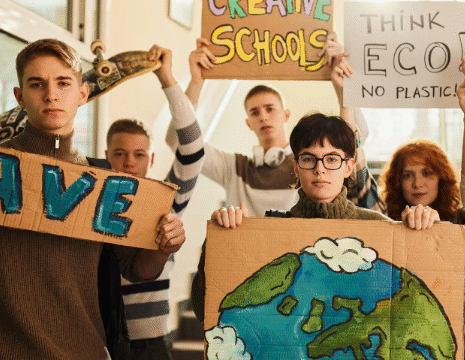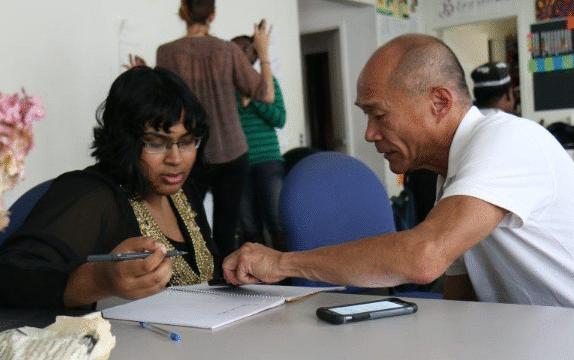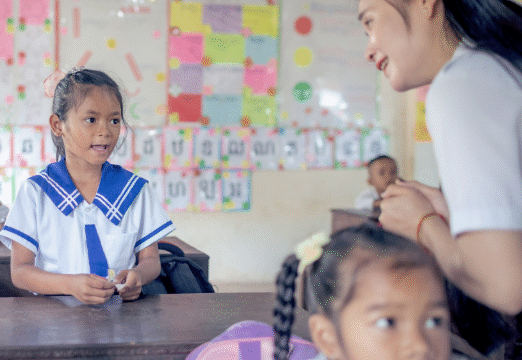Education is often described as the key to opportunity,
a tool that empowers individuals to grow, communities
to thrive, and societies to progress. Around the world,
there has been a strong push to make education accessible to all, regardless of a child’s background or circumstances. This vision of universal education reflects the belief that learning should never be a privilege for the few but a right for everyone. Yet, achieving this noble goal has proven to be difficult, with one of the greatest barriers being the consistent challenge of funding.
Governments, international organizations, and local communities have long recognized the value of education in breaking cycles of poverty and promoting equality. However, providing high-quality education for every child requires sustained financial resources. Schools need teachers, classrooms, books, technology, and safe environments to function well. In many regions, the funding available simply does not meet the demand, creating gaps in access, quality, and equity. Understanding these funding challenges is crucial if we are to build a world where education truly reaches every learner.
One major difficulty arises from the uneven distribution of resources across different countries and within nations themselves. Wealthier countries are often able to allocate significant budgets to education, ensuring that most children have access to well-trained teachers, modern facilities, and up-to-date materials. In contrast, many low-income nations struggle to invest enough in schools due to competing needs such as healthcare, infrastructure, and security. Even when governments want to prioritize education, limited tax bases and economic instability reduce the funds available. As a result, children in poorer countries may attend overcrowded classrooms, share textbooks among dozens of peers, or face long walks to reach a school that lacks basic amenities.
Within countries, disparities also exist between urban and rural areas. Cities may benefit from better-funded schools and access to more qualified teachers, while rural communities often lag behind. The financial challenge here is not only about the overall size of the education budget but also about how those funds are distributed to ensure fairness. Without careful planning, money tends to flow toward regions that already have advantages, widening the gap between children who can access quality learning and those who cannot.
Another key challenge lies in the rising costs of education as expectations for quality increase. Modern classrooms require more than chalkboards and desks. To prepare students for today’s world, schools need computers, internet access, and science laboratories. Teachers also require ongoing training to keep up with new teaching methods and technological tools. All of these improvements carry financial implications. While such investments are necessary to give students relevant skills, they can strain already tight budgets, leaving some schools unable to modernize.
International aid has often been viewed as a solution to fill funding gaps, but this too faces challenges. Donor support can make a significant difference, especially in low-income countries, but aid is not always reliable or consistent. Shifts in political priorities, economic downturns, or competing global crises can cause donor funding to fluctuate. This unpredictability makes it difficult for education systems to plan for the long term. Schools may start projects with external support only to find that funds run dry midway, leaving students and communities disappointed.
The global pandemic also highlighted how fragile education funding can be. Many countries faced economic slowdowns, which led to reduced tax revenues and tighter government budgets. Education, despite its importance, sometimes took a backseat as governments redirected funds to urgent health and recovery measures. At the same time, the shift to remote learning revealed significant digital divides, requiring massive investments in technology, internet access, and training. These demands added even more pressure on education budgets, especially in regions already struggling to fund basic schooling.
Another layer of complexity comes from demographic changes. In some countries, particularly in parts of Africa and Asia, rapidly growing populations mean that millions of new students enter the school system every year. Expanding classrooms, hiring teachers, and building facilities to meet this growth is a monumental financial task. In other parts of the world, aging populations mean fewer young people, which can lead to shrinking education budgets as governments focus spending on pensions and healthcare. Balancing these demographic pressures adds to the challenge of ensuring universal education.
Corruption and mismanagement also play a role in funding challenges. Even when significant funds are allocated to education, poor oversight or misuse of resources can prevent money from reaching classrooms. Transparency and accountability are critical to ensure that education budgets truly benefit students. Communities that lack a voice in decision-making may not see their schools prioritized, reinforcing cycles of inequality.
Despite these obstacles, there are inspiring examples of how countries and communities are working to overcome funding challenges. Some nations have adopted innovative financing methods, such as education bonds or public-private partnerships, to mobilize additional resources. Others have strengthened local involvement, allowing communities to have a say in how education funds are spent, which increases accountability and ensures that money addresses actual needs. International cooperation, when consistent and transparent, has also supported progress in many places by sharing knowledge, resources, and best practices.
The private sector can also contribute positively when engaged responsibly. Businesses that invest in education, whether through scholarships, infrastructure development, or technology support, can help bridge funding gaps. However, it is important to balance private involvement with public oversight to ensure that education remains inclusive and equitable rather than turning into a profit-driven enterprise that leaves vulnerable children behind.
At the heart of all these efforts is the recognition that education is an investment rather than an expense. The returns are seen in healthier societies, stronger economies, and more peaceful communities. Every dollar invested in education can yield significant benefits for individuals and nations alike. When children learn, they are more likely to secure jobs, contribute to their communities, and break cycles of poverty. This understanding has motivated global initiatives like the Sustainable Development Goals, which include the commitment to ensure inclusive and equitable quality education for all.
Moving forward, addressing funding challenges will require creativity, collaboration, and commitment. Governments must work to expand their fiscal capacity, donors need to honor their pledges with consistency, and communities should be empowered to hold decision-makers accountable. The involvement of educators, families, businesses, and civil society can help ensure that funding is used wisely and reaches the children who need it most.
Universal education is a vision worth pursuing, even if the financial road is steep and complex. Every child who enters a classroom with hope and curiosity represents potential for a brighter future. The funding challenges are real, but so is the determination of countless people around the world who believe in the transformative power of education. By facing these challenges head-on and seeking fair, innovative solutions, the world can move closer to a reality where no child is left without the chance to learn and grow.






